100 High-Frequency Words: FREE Flashcards (SOR-aligned)
This post may contain affiliate links. As an Amazon affiliate, we earn from qualifying purchases.
If you’re looking for a science-backed way to teach high-frequency words, look no further. Get 100 beautiful flashcards with words from the Fry word list with hearts above any irregular parts and teacher notes to help you best teach the words in a way that is supported by research.
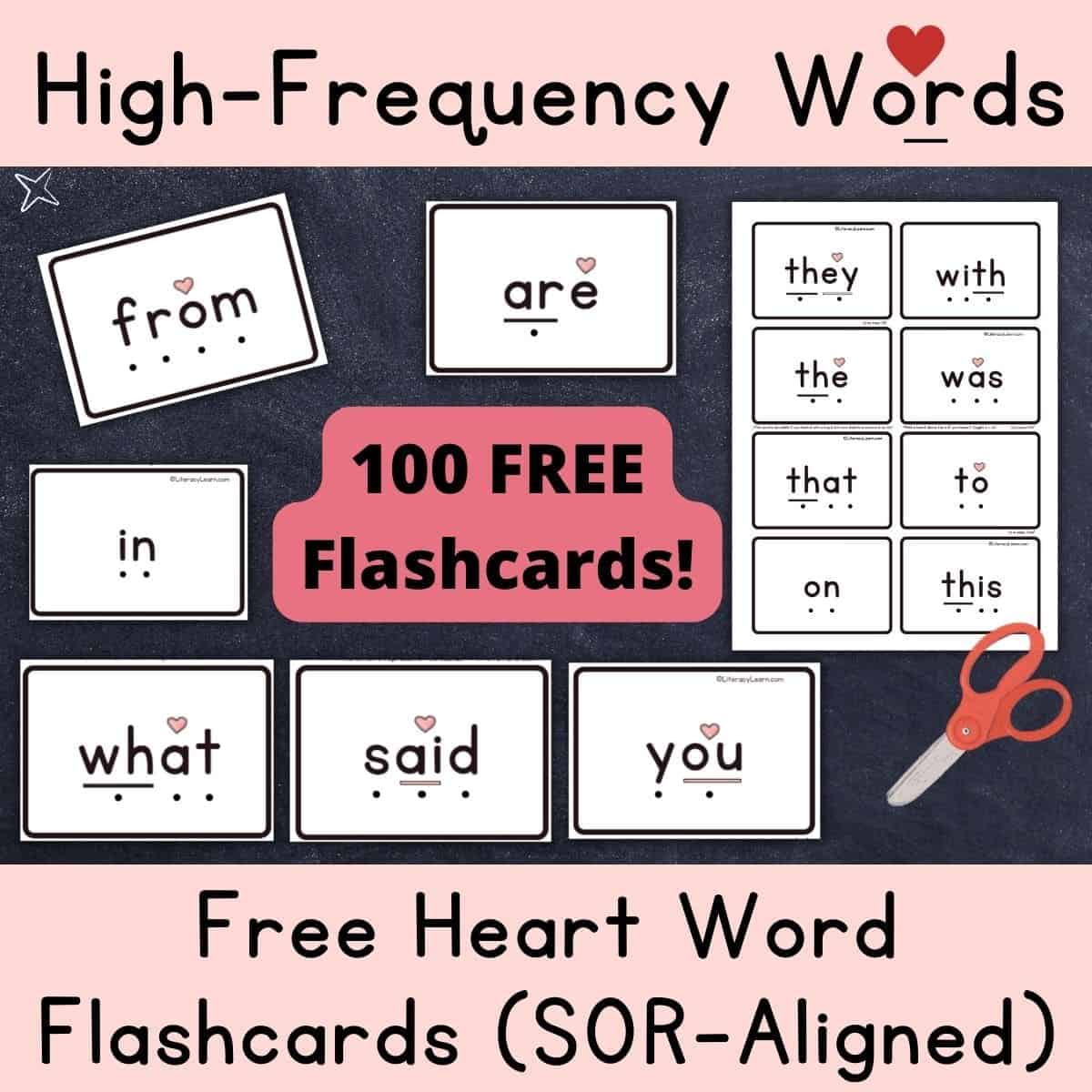
All About High-Frequency Words
High-frequency words (HFW) are the words that we see most often when reading English texts; Basically, they’re the words used in the highest frequency.
➡️ Some examples of high-frequency words are: but, so, come, the, and, a, me, like, what, and that.
These are super important words for kids to know because they’ll see them all the time! So young readers need to be able to read and spell these words to become fluent.
How To Teach High Frequency Words
Whether a word is perfectly decodable or whether it includes an irregular part, we teach high-frequency words in the same research-based way by using orthographic mapping.
Kilpatrick (2015) describes orthographic mapping as “the mental process we use to permanently store words for immediate, effortless retrieval. It is the process we use to take an unfamiliar printed word and turn it into an immediately recognizable word”.
We orthographically map words by making letter-sound connections. When this happens over and over again, the brain is able to store the word and it becomes a ‘sight word.’
The good news is about 75% of high-frequency words are perfectly decodable, where the sound we hear is represented by letter (or letters) that match the sound.
👉🏼 For example, in the word ‘went’ we hear four sounds. Each sound is represented by the common spelling /w/ = w, /ĕ/ = e, /n/ = n, /t/ = t. Kids who know these letters/sounds should be able to see the letters, say the sounds, and blend the sounds together to read the word accurately.
The other 25% of high-frequency words include irregular spelling patterns that require explicit teaching of that irregular part. The good news is that most of these words only include one irregular part.
👉🏼 For example, in the word ‘said’ we hear three sounds. The first sound is /s/ = s, /ĕ/ = ai, /d/ = d. Notice how the middle sound we hear – /ĕ/ – does not match the letters we see – ai. This is the irregular portion of the word, and that portion of the spelling must be memorized by heart.
But regardless of whether the word is decodable or has irregular parts, we still explicitly teach the word using orthographic mapping. This anchors the regular portions in the brain and only requires memorizing the irregular portion.
Some refer to this as heart word method, where we memorize the irregular parts ‘by heart.’ This is the way to teach irregular words that is scientifically based and most effective!
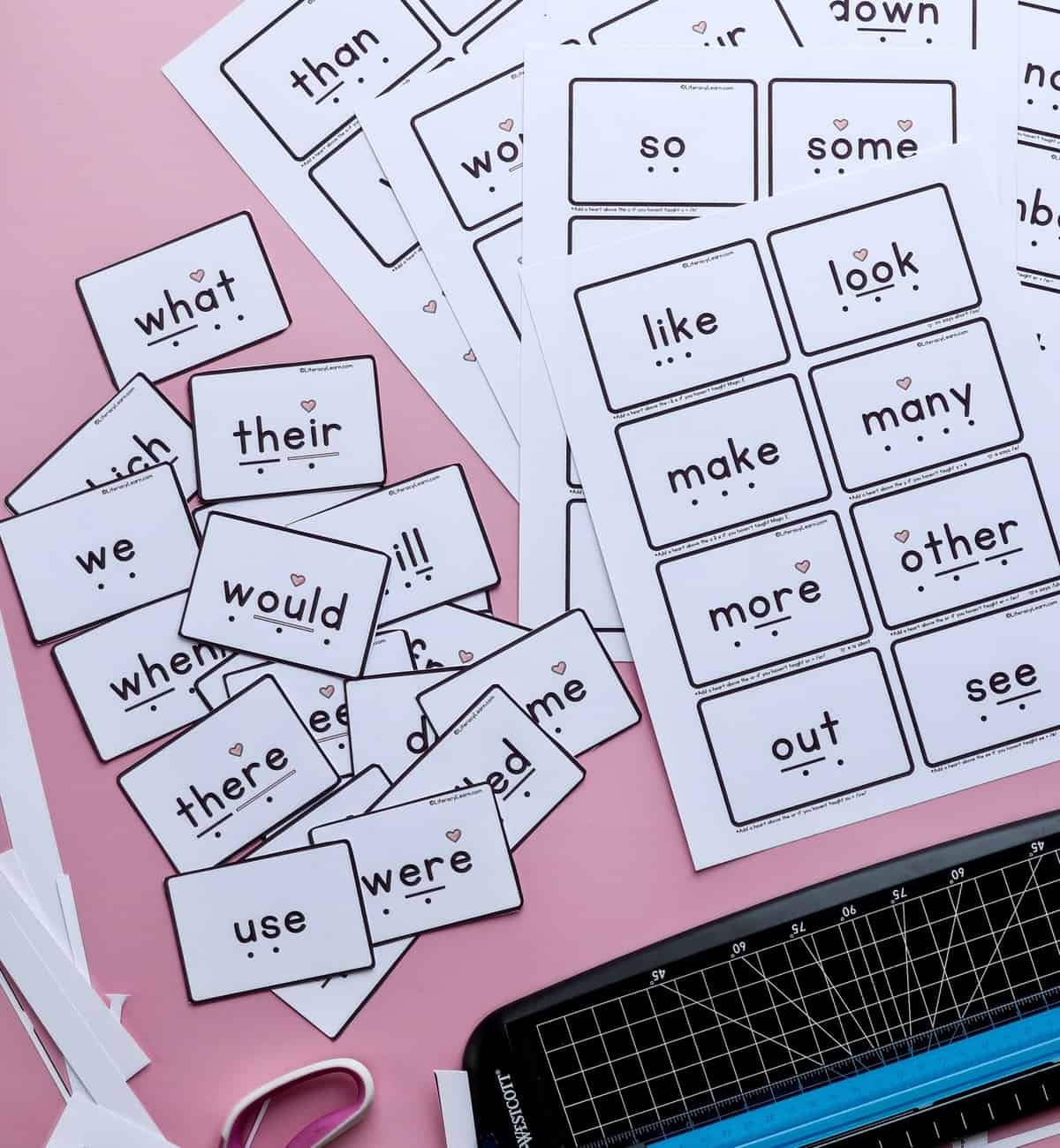
Using the Flashcards
In the past, kids were handed flashcards and told to memorize these words. Our flashcards are NOT intended to be used this way. Instead, the flashcards are designed for kids to make phoneme-grapheme connections.
We strategically designed the flashcards to include certain elements, which is why you’ll love them!
- Each HFW is written in large black font that is simple to read.
- Sound dots are included under each grapheme. These dots provide a visual cue that indicate a sound is needed. Kids can touch the dots, look above at the letter/letters, and make the sound, deepening the phoneme-grapheme connection.
- Digraphs, vowel teams, r-controlled vowels, and other phonograms of two or more letters are underlined in black and include only one dot underneath. This provides students with a visual cue to remember that these letters represent one sound.
- Hearts are included above any true irregular part. For example, in the word said, ai will NEVER say /ĕ/, so we included a heart above the two letters along with a pink line underneath the irregular part.
✨ Important: You’ll notice that some parts may be ‘irregular’ for your students. For example, if you have not taught r-controlled vowels, then the word ‘or’ will be totally irregular.
You will notice that the ‘or’ is underlined with one dot (one sound), but there is no heart above it. So with this in mind, we included extra hearts at the end of the resource. This allows you to add the heart to any part you haven’t yet taught.
You can tell kids that it is actually regular, but for now it will have a heart. Then, once it’s been a taught concept, you can remove the heart since the sound matches the spelling.
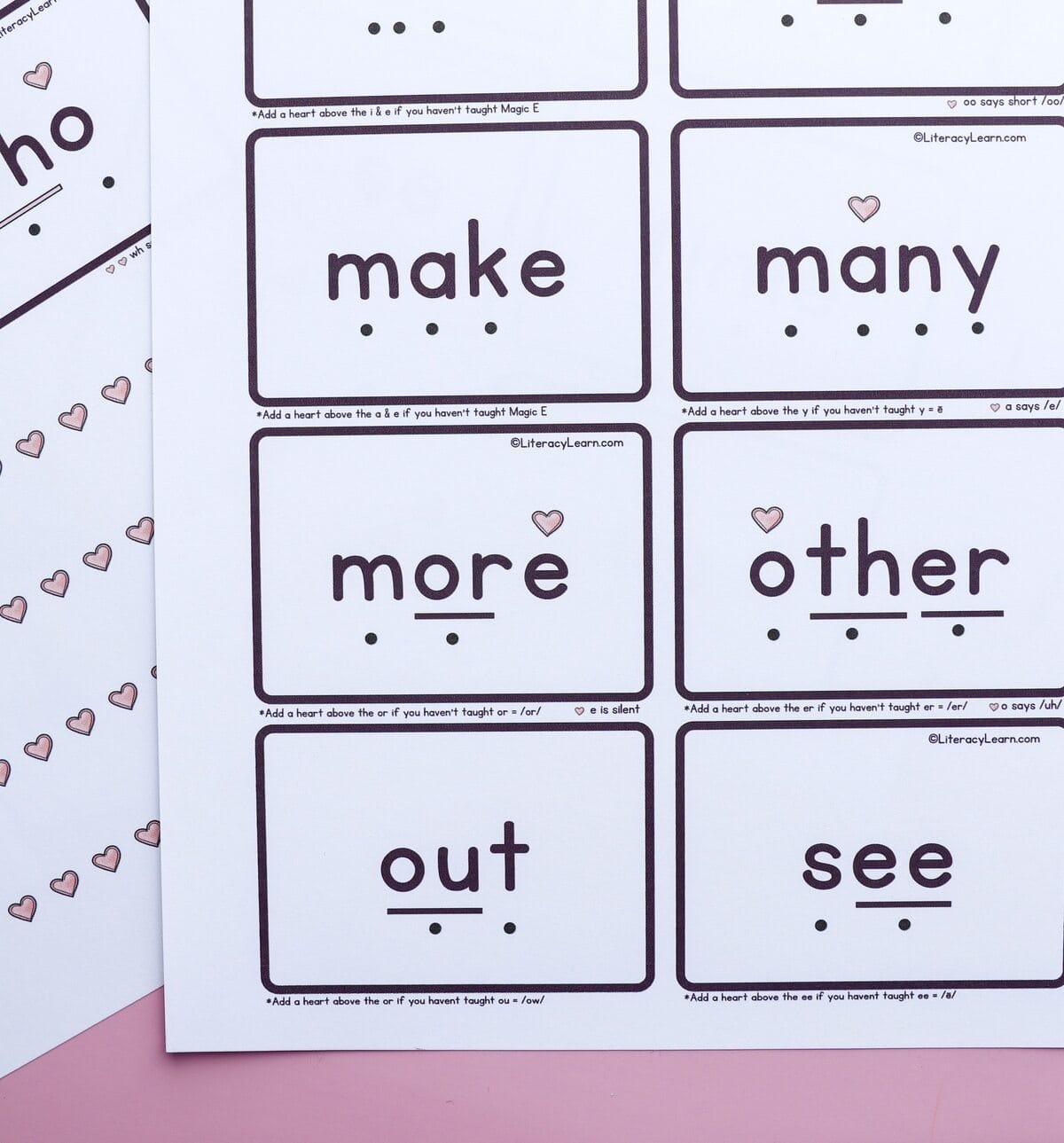
Why We Love It
This resource is exciting for so many reasons!
💟 It’s engaging multiple senses! Kids will say the sound as they touch the dots, drawing attention to the letters they see while anchoring the phoneme-grapheme connection in their brains.
💟 The flashcards include teaching notes for teachers! We know transitioning from the old way of doing things isn’t always easy. Our notes will help ensure you understand the concepts first and explain things in a way that is easy to understand.
💟 It’s aligned with research rooted in the Science of Reading.
If you haven’t tried this approach to teaching HFW words yet, please give it a go! Since switching to this type of instruction, I’ve seen so much improvement and progress, especially with my struggling readers and those with dyslexia.
In my experience, it’s so much more effective than handing kids cards and telling them to memorize words.
Educational Focus: The flashcards are great for self-studying, group activities, centers, playing games, homework practice, and more. Just be sure you’ve explicitly taught any words with irregular parts before giving them to kids to practice.
More HFW Practice
Kids need lots of explicit practice, exposure, and repetition with these words. In my classroom, we practice HFW in various ways.
We read them in decodable sentences and fun poems. Kids can write and rewrite the words using orthographic mapping worksheets, play spelling games, and more.
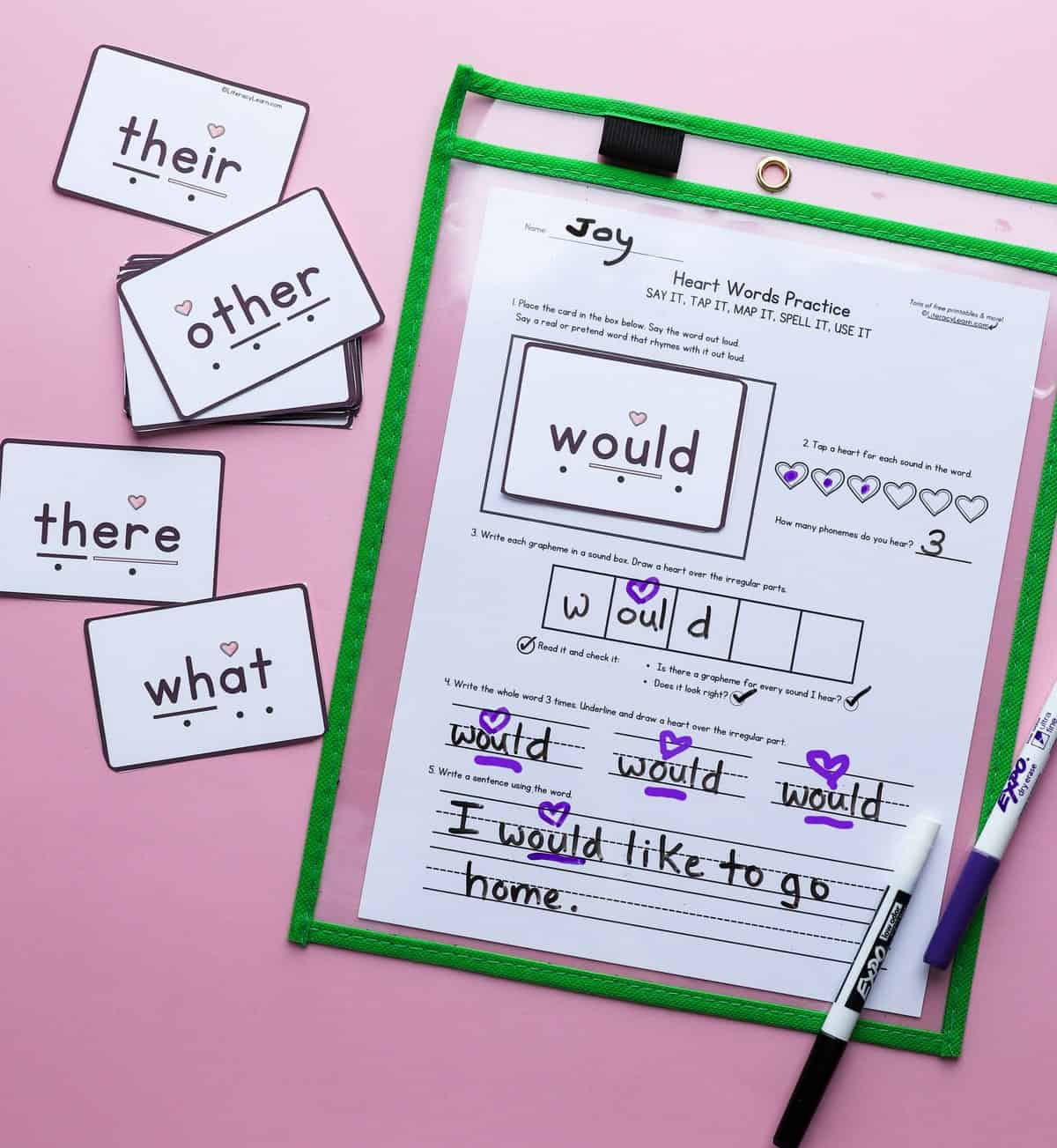
The flashcards are the perfect addition to a sound wall. Just include the words underneath the specific vowel sound heard within the word.
To make this easy, grab our 3 HFW lists organized by vowel sound.
You can also use our fun Dolch Word Game where kids practice using the words from the primer list within context, or use our Dolch Words Lists, organized by similar sounds.
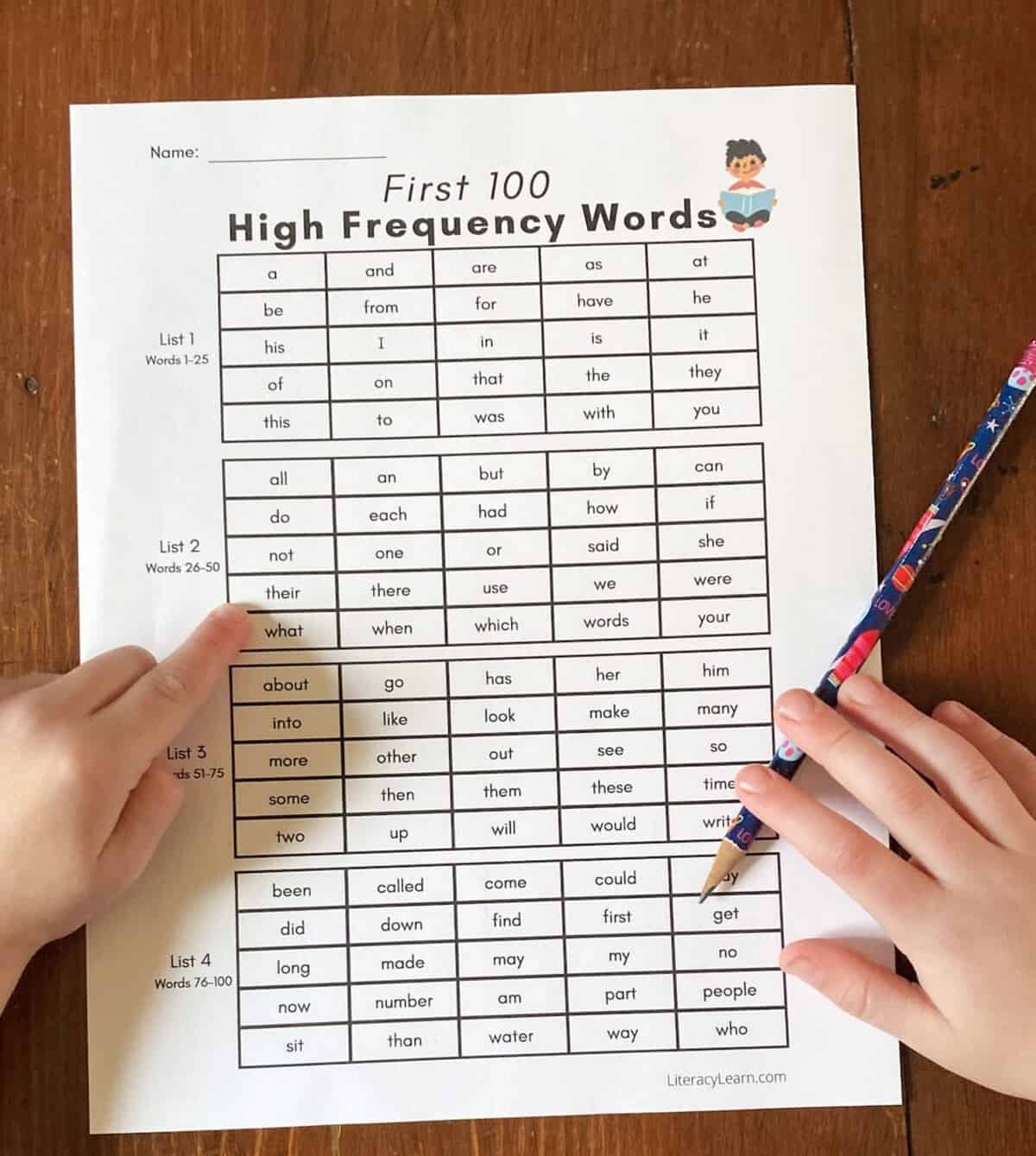
🖨️ Download & Print
DOWNLOAD TERMS: All of our resources and printables are designed for personal use only in homes and classrooms. Each teacher must download his or her own copy. You may not: Save our files to a shared drive, reproduce our resources on the web, or make photocopies for anyone besides your own students. To share with others, please use the social share links provided or distribute the link to the blog post so others can download their own copies. Your support in this allows us to keep making free resources for everyone! Please see our Creative Credits page for information about the licensed clipart we use. If you have any questions or concerns regarding our terms, please email us. Thank you!
Are you using these high-frequency word flashcards with your students? Leave us a comment and tell us how! Or tag us on Instagram @Literacylearn!

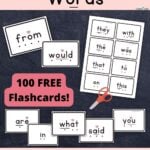
Katie, these are honestly the BEST high frequency word cards I have seen! And I’ve looked and admired a lot. Yours show the difference between the Rule Followers and the Rule Breakers, and I love them! Kids can see when they can use the regular sound for the letters, and when they must adjust the sound, or as some people say, flex the sound. The words can easily be written into sound boxes, as you’ve shown. These cards are a perfect scaffold for strugglers and provide clarity for everyone.
Thank you for making them available for free. *heart* you!
Hi Cathy,
We are so pleased that you like these HFW flashcards. We try our best to always create products that align with research and best practices, and actually work with students! Thank you for the kind feedback 🙂
Katie and Laura
Thanks for all the resources and helpful hints. So glad I discovered Literacy Learn. It’s just what I need for my students.
Sharon,
You’re welcome. We plan to continue publishing high-quality FREE educational materials for you to use with your students. We’re so glad you’re here with us.
Katie and Laura
Looks great i would love this but also am getting an error message.
Hi Daniella, Try again – it should be working now! 🙂
Hi! First thank you for all the resources you have shared here. FYI the link for the First 100 HFW list is saying error.
Hi Eva, It’s our pleasure! I’d recommend you try downloading the files in a different browser. They are working on our end! If you’re still having any trouble, send us an email. 🙂